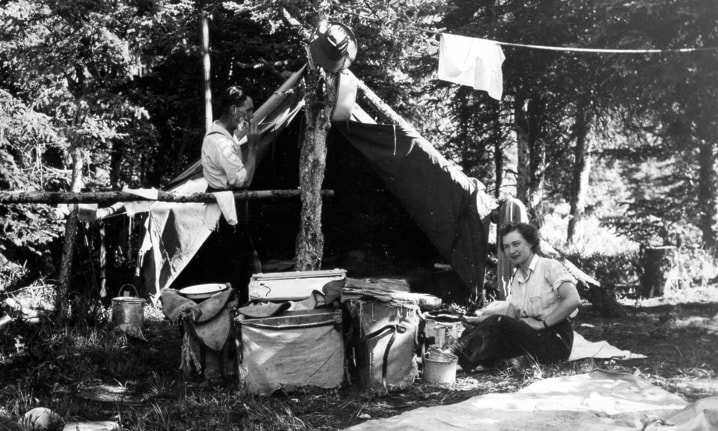Working as a ranger in the 1940s in Clearwater County meant living year-round in the forest, and travelling by horseback to ranger cabins along the trails.
A handful of photos depicting the solitary lifestyle of those rangers, with the majestic and rugged West Country in the background, were recently donated to Alberta Environment and Sustainable Resource Development.
“It was almost an Indiana Jones-type adventure to live out there,” said Barry Shellian, information officer with Rocky Mountain House Wildfire Management Area, on Monday.
“The ranger would have had their family living with them at these ranger stations. They did the one-day patrol from cabin to cabin.”
A photo album, found at a garage sale, was passed along to an Olds resident who allowed Alberta Environment to scan and archive the images for use in future books, newsletters, presentations and newspapers.
Shellian said hopefully the people in the photos can eventually be identified because there’s one of a woman on horseback on the Idlewilde Trail wearing a ranger uniform.
“According to our records in that time frame there were no uniformed female forest officers.”
The photos will also be used to look at how the landscape has changed.
One photo captioned “Helen at the lookout” shows a woman sitting in the door frame of the old Baseline lookout tower that has since been destroyed by fire.
“That old building was there until about two years ago, until a member of the public got happy with a match. You can still walk over there from our current lookout and see the foundation.”
He said only 12 historic cabins remain in the area.
Many more used to dot the wilderness.
Now they are used as shelter for back-country patrols or base camps for prescribed burns.
He said many rangers were retired soldiers with survival experience.
Policies and procedures were in place to help keep them safe and they maintained contact with the outside world with a telegraph line.
Shellian said he knows exactly where he is when he’s out in the West Country — within metres — with all the reference points and maps that now exist.
Older maps lack that kind of detail so there was a lot of unknowns beyond the trails and over the hills for rangers in days gone by.
Rangers would get supplies from local communities. But they also would fish and hunt to supplement their food supply.
“It truly, truly was a lifestyle for them and they really loved trees and life and they made a difference.”
Shellian said the duties of forest rangers actually remain pretty much the same as they did back then — to prevent and manage wildfires; educate, engage and assist the public; and to be a presence on the land.
But now rangers have helicopters for rescues and to fight fires.
And if they need to drive from Rocky Mountain House to the Baseline tower, it only takes an hour rather than a three-day journey, he said.
szielinski@www.reddeeradvocate.com
